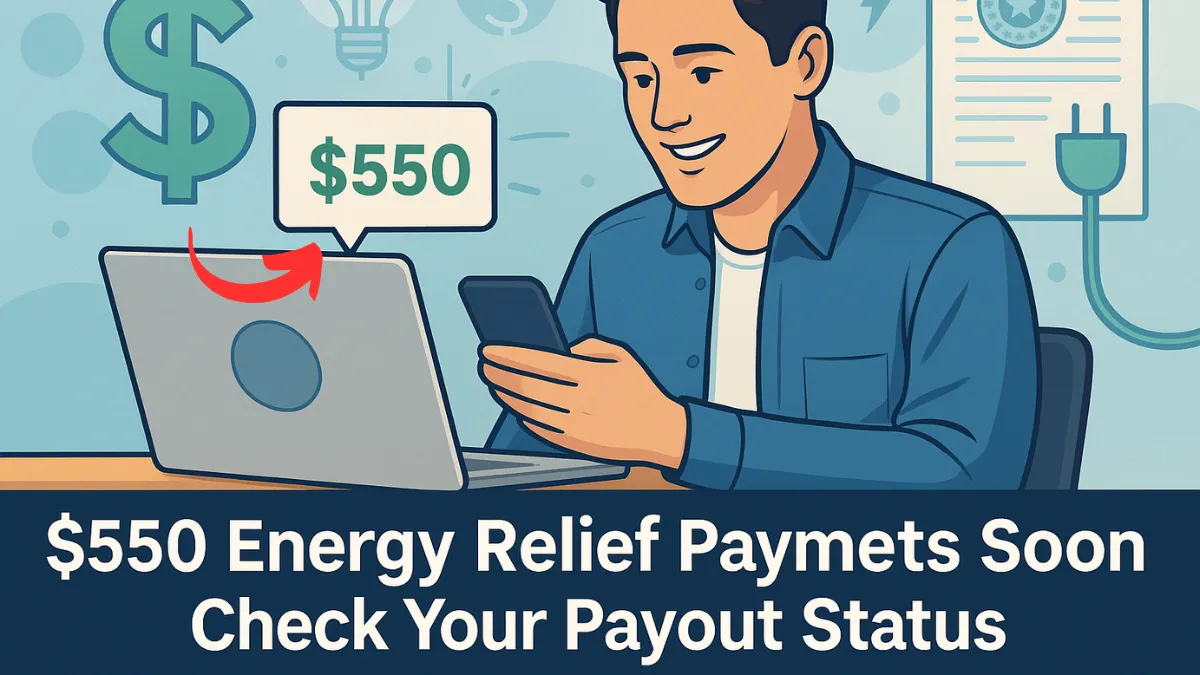Millions of households struggling with high energy bills will soon receive $550 Energy Relief Payments. These payments aim to help families cover rising utility costs and avoid choosing between heat and other basic needs.
What Is the Energy Relief Payment Program?
The Energy Relief Payment is a new government support program created in response to increasing utility bills across the country. It provides direct financial help to families most affected by energy costs.
Sarah Matthews, a single mom from Cleveland, shared her thoughts:
“Last winter, I had to choose between heat and food. This payment means I don’t have to make that choice again.”
While $550 may not sound like much to some, it can cover 1–2 months of heating for many households.
Who Can Get the $550 Payment?
This is one of the most inclusive energy aid programs ever launched. It focuses on helping both low- and moderate-income families.
🔹 Income-Based Eligibility
- Full $550 payment for those earning 150% or less of the Federal Poverty Level
(Approx. $41,625/year for a family of four) - Partial payments ($275–$400) for incomes between 150%–200% of the poverty level
🔹 Special Groups That Qualify Faster
- Seniors aged 65+
- People with disabilities or medical conditions needing electricity
- Families with kids under 5
- Veterans and their families
- Anyone recently affected by job loss or a medical emergency
When Will You Get Paid?
Here’s the payment schedule:
| Phase | Group | Payment Dates |
|---|---|---|
| 1 | Special groups | May 1–10, 2025 |
| 2 | Lowest-income households | May 11–20, 2025 |
| 3 | Moderate-income households | May 21–31, 2025 |
| 4 | Partial payment recipients | June 1–15, 2025 |
| 5 | Late applicants and appeals | June 16–30, 2025 |
How Will You Receive the Payment?
Payments will be sent through three simple methods:
- Utility bill credit – Most people will see the money automatically appear as a credit on their energy bill.
- Bank transfer – If you provided your banking info, the payment will go straight to your account.
- Prepaid energy card – If you rent or don’t have a regular utility account, you’ll get a special card that can only be used to pay for energy.
Why This Matters: The Bigger Picture
Helping households pay for energy doesn’t just keep the lights on—it boosts local economies. For every $1 in energy aid, around $1.70 is added to the economy. Families can spend more on groceries, medicine, and other essentials.
Dr. James Thompson, a community development expert, said:
“When people don’t have to choose between heating and eating, the whole neighborhood benefits.”
How to Check Your Eligibility and Payment
Online Portal
Visit the official website to:
- Check if you qualify
- Find your expected payment date
- Update your information
- Access extra energy-saving resources
If You Can’t Go Online:
- Call the 12-hour support line (7 AM–7 PM local time)
- Visit local community centers for help
- Mobile units will assist people in rural and underserved areas
How to Save on Energy in the Future
Use the relief money to cut future energy costs with small upgrades:
- Weather stripping can save up to 10% on heating
- LED lights use 75% less power
- Smart thermostats save around $140 a year
- Better insulation can cut bills by 15%
Also, ask your energy provider about budget billing, which makes your bill the same every month—great for planning and avoiding surprise high bills.
FAQs
1. Who gets the full $550?
Households earning 150% or less of the Federal Poverty Level qualify for the full amount.
2. When will I get the payment?
Payments begin May 1, 2025. The exact date depends on your income level or special category.
3. Do I need to apply?
Most eligible households will be automatically enrolled. Others can apply through the online portal or local community agencies.
4. What if I rent and don’t get a utility bill?
You’ll receive a prepaid energy card to use for your energy payments.
Conclusion
The $550 Energy Relief Payment is more than just a short-term fix—it’s a lifeline for families trying to stay warm and stay ahead. With automatic payments, fewer delays, and wider eligibility, this program makes it easier for households to breathe a little easier. Whether you use the money to cover bills or improve your home’s efficiency, it’s a step toward long-term energy security.
